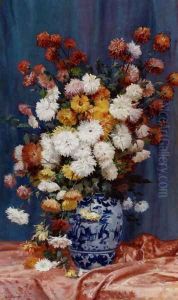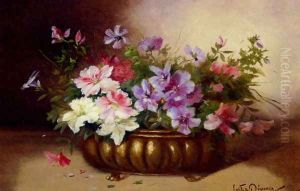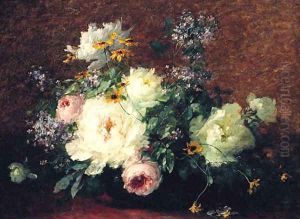Adolphe Louis Castex-Degrange Paintings
Adolphe Louis Castex-Degrange was a French artist born in 1870 in the city of Bordeaux, France. Although not as widely recognized as some of his contemporaries, Castex-Degrange made significant contributions to the art world, particularly in the realm of engraving and illustration. His work was emblematic of the late 19th and early 20th centuries, a period that was characterized by rapid changes in the arts, with movements such as Impressionism, Art Nouveau, and later, Modernism, taking center stage.
Castex-Degrange's artistic journey began in his hometown, where he was initially exposed to the rich cultural heritage of Bordeaux. He later moved to Paris, which was the epicenter of the art world at the time. There, he became deeply involved in the artistic community, honing his skills and developing his unique style. He was particularly known for his etchings, which often featured intricate details and a masterful use of line. His subject matter was diverse, ranging from landscapes and cityscapes to figures and allegorical scenes.
During his lifetime, Adolphe Louis Castex-Degrange participated in various exhibitions, including the prestigious Salon de Paris, which was the official art exhibition of the Académie des Beaux-Arts in Paris. His work was well received, and he garnered respect among his peers for his technical ability and artistic vision. Despite the positive reception, Castex-Degrange remained relatively modest in fame compared to some of the leading artists of his day.
Castex-Degrange's career was also reflective of the broader historical context of France at the turn of the century. The nation was undergoing a period of transformation, with the aftershocks of the Franco-Prussian War and the rise of the Third Republic influencing both the political and cultural landscape. In this environment, artists were exploring new ideas and techniques, with many like Castex-Degrange contributing to the vibrancy of French art during this era.
Adolphe Louis Castex-Degrange passed away in 1929, leaving behind a body of work that, while not as celebrated as some of his contemporaries, offers valuable insight into the artistic movements and styles of his time. His engravings and illustrations remain appreciated by collectors and art historians for their elegance and precision, and his contributions continue to be studied by those interested in the development of French art in the late 19th and early 20th centuries.


